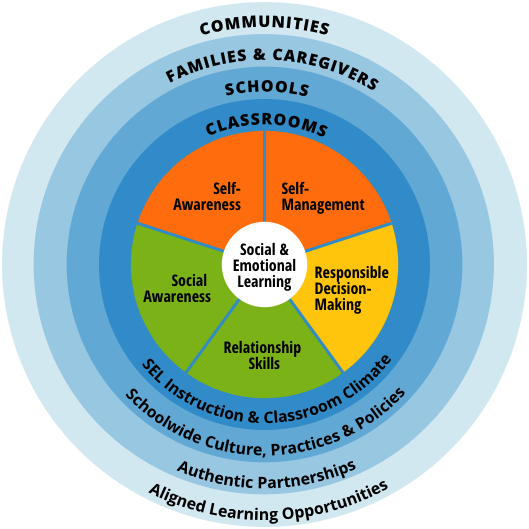
A Necessary Response
What a challenging–and overwhelming–18 months it has been for the world! As we all continue to process the impacts of COVID-19 on our own lives, it is impossible to miss how deeply this pandemic has impacted how we relate to one another. Time away from typical relationship-building activities has pushed an already-important concept straight to the forefront of education: Social-Emotional Learning, often referenced as “SEL.”
Here are some of the components of SEL, as described by the Collaborative for Academic, Social, and Emotional Learning (CASEL):
- develop healthy identities
- manage emotions
- achieve personal and collective goals
- feel and show empathy for others
- establish and maintain supportive relationships
- make responsible and caring decisions
- advance educational equity and excellence

Music Learning and SEL
Your students’ music educators want to share and celebrate all of the ways music education very naturally facilitates SEL, and encourage you that we are working diligently to leverage these strengths for the benefit of your children. Using the CASEL Wheel above, here are just a few examples of how music classrooms provide SEL in both embedded and direct ways:
| Framework Piece | Music Classroom |
| Social Awareness | Collaborative & cooperative group performances Music-based games Learning about the impact of music on culture Reflect students’ cultures in musical choices |
| Relationship Skills | Opportunities for affirming others’ efforts and contributions to group music-making, in community Performances in partnerships, small groups, and large groups |
| Responsible Decision-Making | Creative decision-making for musical tasks like composition and improvisation Working to achieve balance in musical ensembles |
| Self-Management | Opportunities to develop perseverance through musical practice–many times, musical tasks are not performed perfectly the first time |
| Self-Awareness | Learning tasks that involve responding to music, identifying emotional responses, and developing reasoning for personal preferences and expression |
Music and SEL at Home
Music classrooms have, for many years already, been fertile soil for growing community, teamwork, and meaningful relationships. As we press forward and continue to develop new resources that meet our current students’ needs, we cheer you on–parents and guardians are so powerfully important to a child’s social-emotional development! There are so many ways for you to easily utilize music at home to build connection with your student: listening together to music you love (and talking about it!), family dance parties, and even specifically choosing music to use together for relaxation. As we close out this post, we leave you with a video from Quaver, a music curriculum our students are really loving. This “Relax Your Mind” song is just a few minutes long, and was asked for on repeat this past week. Enjoy!